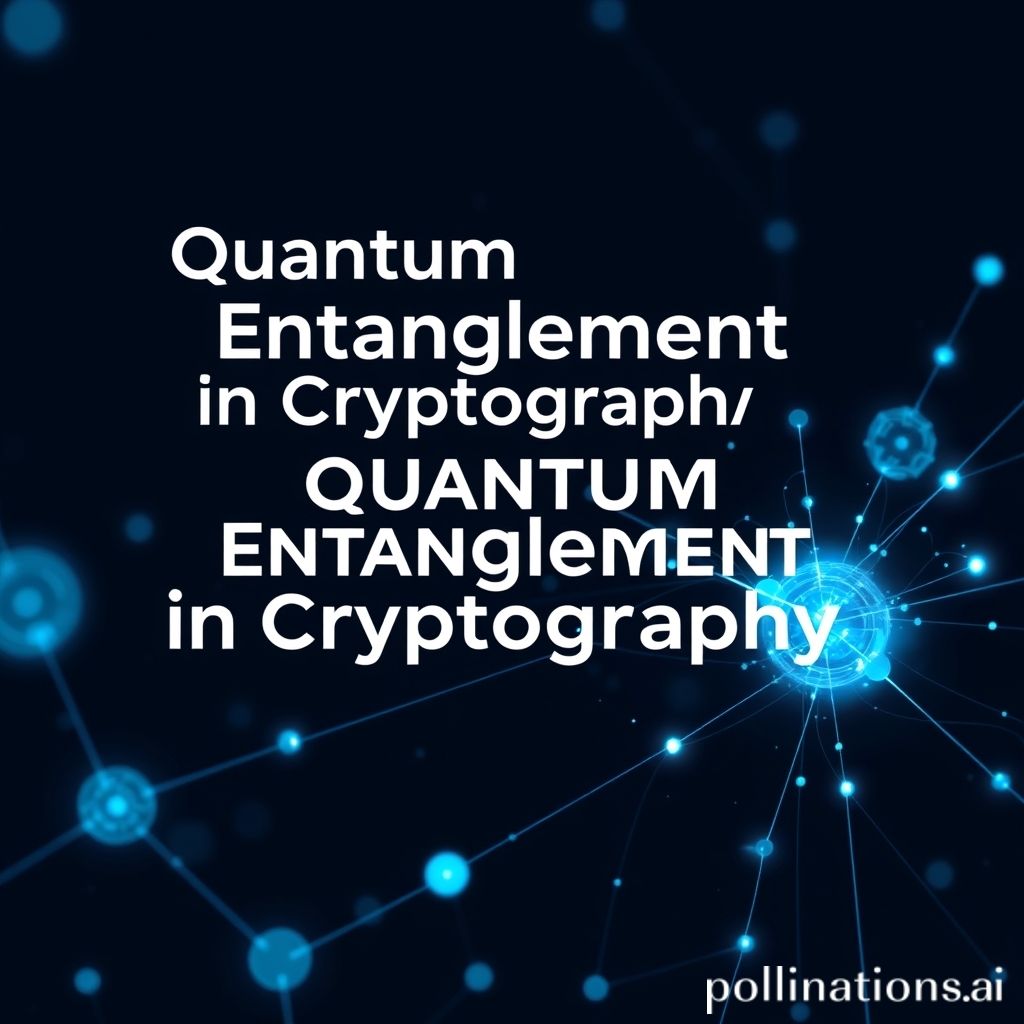
Quantum Entanglement in Cryptography
Introduction to Quantum Entanglement
Quantum entanglement is a fascinating phenomenon in quantum mechanics where two or more particles become linked together in such a way that they share the same fate, no matter how far apart they are. This means that if you measure a property of one particle, you instantly know the corresponding property of the other, even if they are separated by vast distances. This correlation is not due to any physical connection or signal passing between them, but rather a fundamental aspect of quantum reality.
Imagine flipping two coins at the same time. Classically, each coin has a 50/50 chance of landing on heads or tails, independently of the other. In the quantum world, entangled particles are like these coins, but with a twist. They are linked in such a way that if one lands on heads, the other must land on tails, and vice versa. This happens instantaneously, regardless of the distance separating them. This seemingly "spooky action at a distance," as Einstein called it, has profound implications for various fields, including cryptography.
The Promise of Quantum Cryptography
Traditional cryptography relies on mathematical algorithms that are computationally difficult to break. However, with the advent of powerful quantum computers, these algorithms are becoming increasingly vulnerable. Quantum cryptography, on the other hand, leverages the laws of quantum mechanics to provide a more secure means of communication. Specifically, quantum key distribution (QKD) utilizes the principles of quantum entanglement to generate and distribute cryptographic keys that are theoretically unbreakable.
Quantum Key Distribution (QKD) with Entanglement
One of the most promising QKD protocols is based on entangled photons. The process typically involves the following steps:
- Entangled Photon Generation: Two parties, often referred to as Alice and Bob, share a source of entangled photon pairs.
- Measurement: Alice and Bob independently measure the polarization of their respective photons. They randomly choose from a set of different polarization bases.
- Sifting: Alice and Bob publicly compare the bases they used for their measurements. They discard the results where they used different bases, keeping only the measurements made with the same bases.
- Key Generation: The remaining measurements, where Alice and Bob used the same bases, form the raw key.
- Error Correction and Privacy Amplification: The raw key is then subjected to error correction and privacy amplification techniques to remove any errors and reduce the information that an eavesdropper (Eve) might have gained during the transmission.
The crucial advantage of entanglement-based QKD lies in its inherent security. Any attempt by an eavesdropper to intercept or measure the entangled photons will inevitably disturb their entanglement. This disturbance can be detected by Alice and Bob, alerting them to the presence of an eavesdropper and allowing them to discard the compromised key.
Advantages and Challenges
Quantum cryptography offers several advantages over classical cryptography:
- Unbreakable Security: Based on the fundamental laws of physics, making it immune to future advances in computing power.
- Eavesdropping Detection: Intrusion attempts are detectable, allowing users to abort the key exchange and prevent data compromise.
- Long-Term Security: The security of the key is not dependent on the secrecy of the algorithm.
However, quantum cryptography also faces several challenges:
- Distance Limitations: Quantum signals are susceptible to loss and decoherence over long distances, requiring quantum repeaters.
- Cost: Quantum communication systems are currently expensive to implement and maintain.
- Practical Implementation: Building robust and reliable quantum devices is a complex engineering challenge.
Conclusion
Quantum entanglement offers a revolutionary approach to cryptography, promising unprecedented levels of security. While challenges remain in terms of distance limitations, cost, and practical implementation, ongoing research and development efforts are steadily overcoming these hurdles. As quantum computers continue to advance, the need for quantum-resistant cryptography will become increasingly critical. Quantum entanglement, therefore, holds immense potential for securing sensitive information in the quantum era.
